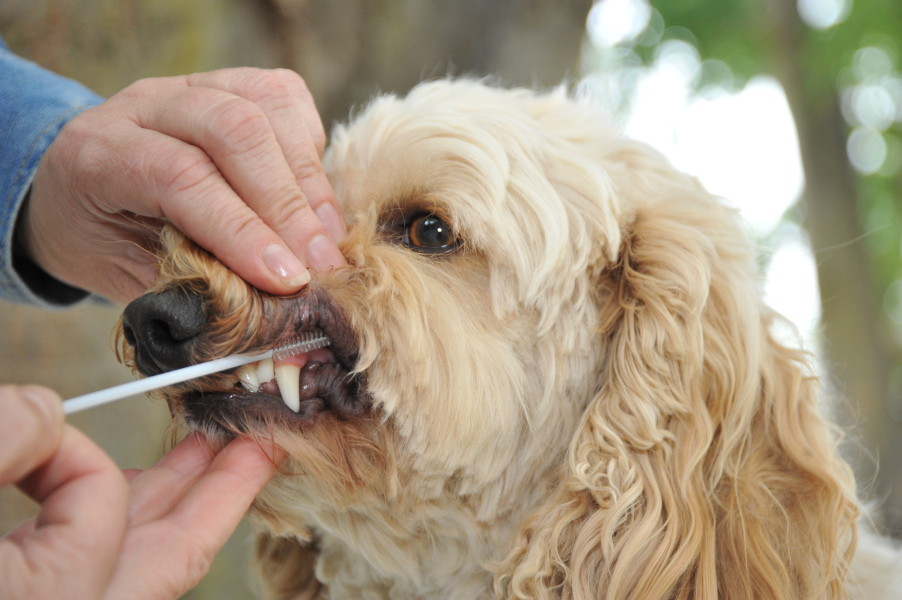Quick Summary
Click here for Price and Turnaround Time
Phenotype: Loss of cone function due to cone degeneration results in day-blindness and decreased visual acuity, with signs of the defect appearing between 8 and 12 weeks when retinal development is completed in dogs. Typically, affected dogs become increasingly photophobic as exposure to bright light is irritating and painful. Vision in low light conditions remains normal.
Mode of Inheritance: Autosomal recessive
Alleles: N = Normal, CD1 = CNGB3 cone degeneration variant (gene segment deletion), CD2 = CNGB3 cone degeneration variant (SNP nucleotide change)
Breeds appropriate for testing: Alaskan Malamute, Alaskan Sled Dog, Australian Shepherd, German Shorthaired Pointer, Miniature Australian Shepherd, Siberian Husky
Explanation of Results:
- Dogs with N/N genotype will not have these types of cone degeneration.
- Dogs with N/CD1 or N/CD2 genotype will not have these types of cone degeneration, but are carriers. They will transmit a cone degeneration variant to 50% of their offspring. Matings between two carriers are predicted to produce 25% cone degeneration-affected puppies.
- Dogs with CD1/CD2, CD1/CD1, or CD2/CD2 genotype will have cone degeneration, an inherited disease that causes day-blindness.
Results of this test can be submitted to the OFA (Orthopedic Foundation for Animals)
Sample Collection
Dog DNA tests are carried out using cells brushed from your dog's cheeks and gums. The preferred cytology brushes are sent to you by mail, or you may provide your own brushes. For accepted alternative brushes, click here
We recommend waiting until puppies are at least three weeks old before testing.

Step-By-Step:
- Make sure the dog has not had anything to eat or drink for at least 1 hour prior to collecting sample.
- When swabbing puppies, isolate each puppy from the mother, littermates and any shared toys for 1 hour prior to swabbing. Puppies should not have nursed or eaten for 1 hour prior to collecting sample.
- If collecting samples from more than one dog, make sure to sample one dog at a time and wash your hands before swabbing another dog.
- Label brush sleeve with name or ID of dog to be sampled.
- Open brush sleeve by arrow and remove one brush by its handle.
- Place bristle head between the dog’s gums and cheek and press lightly on the outside of the cheek while rubbing or rotating the brush back and forth for 15 seconds.
- Wave the brush in the air for 20 seconds to air dry.
- Insert brush back into sleeve.
- Repeat steps 5 - 8 for each unused brush in sleeve on a fresh area of cheek and gums. Make sure to use and return all brushes sent by the VGL. In most cases, it will be 3 brushes per dog. If using interdental gum brushes, please note that the VGL requires 4 brushes per dog and only moderate or wide interdental gum brushes are accepted.
- Do not seal brushes in sleeve.
- Place all samples in an envelope and return to the address provided.
ATTENTION:
- Do not collect saliva/drool – the key to obtaining a good sample is getting cheek cells on the swab
- Do not rub swab on the dog’s tongue or teeth – this will result in poor quality sample
- Do not collect a sample from a puppy that has recently nursed – the mother’s genetic material can rub off on the puppy’s mouth and contaminate the sample
There are 2 known mutations of the CNGB3 gene that cause canine cone degeneration (CD) day-blindness in dogs. One affects Miniature Australian Shepherd, Alaskan sled dogs, and related breeds; the other is found in German Shorthaired Pointers and Alaskan sled dogs.
One form of cone degeneration (CD1) or CNGB3-achromatopsia results from the deletion of a 400,000 bases long genomic segment that includes the CNGB3 gene. The loss of CNGB3, a key component for normal vision, causes loss of function of the cones in the eye. This can only be confirmed by electroretinography; ophthalmic exams of affected dogs are not informative as results remain normal. This disease is inherited in an autosomal recessive fashion with both sexes being equally affected. The loss of cone function results in day-blindness and decreased visual acuity, with signs of the defect appearing between 8 and 12 weeks when retinal development is completed in dogs. Typically, affected dogs become increasingly photophobic as exposure to bright light is irritating and painful. Vision in low light conditions remains normal. Dogs with one normal and one deleted gene have normal vision. This defect is found in Alaskan Sled Dogs, Alaskan Malamute, Miniature Australian Shepherd, and Siberian Husky breeds.
Another form of CNGB3 (CD2) is due to a different mutation, a nucleotide change (SNP) in exon 6 of CNGB3, and is found in German Shorthaired Pointers and Alaskan Sled Dogs. This mutation is also an inherited as autosomal recessive and the disease progression and phenotype are similar to CD1. Dogs with 1 copy each of the 2 mutations (compound heterozygotes) are affected.
Genetic testing is recommended for German Shorthaired Pointer, Alaskan Malamute, Miniature Australian Shepherd, Siberian Husky, and Alaskan Sled Dogs breeds. Australian Shepherds may also be at risk.
